'Today, 25 years later, Raja Hindustani is as much a Dharmesh Darshan film as it is Aamir Khan and Karisma Kapoor's 'different' love story.'

He was just 24 when he started Raja Hindustani and 27 when the film released after a three-year journey on November 15, 1996.
In its silver jubilee year, writer-director Dharmesh Darshan has the satisfaction of having helmed a blockbuster which still reigns in the list of Hindi cinema's biggest blockbusters.
The rich girl-meets-poor boy love story which turns into a high-voltage family drama after the wedding, has struck a chord with audiences not just across the country but even the world.
It won acting awards for its lead pair, Aamir Khan and Karisma Kapoor, and rave reviews for Dharmesh.
But surprisingly, he went on to make just seven films.
In a heart-to-heart with Rediff.Com Contributor Roshmila Bhattacharya, he says, "Raja Hindustani marked a major turning point in Aamir's career, after which he has never looked back. Karisma Kapoor, who till then was best known for her glam quotient and dancing skills, also picked up several Best Actress Awards, stealing a march on more seasoned performers like Sridevi, Madhuri Dixit and Juhi Chawla."
From Lootere to Raja Hindustani
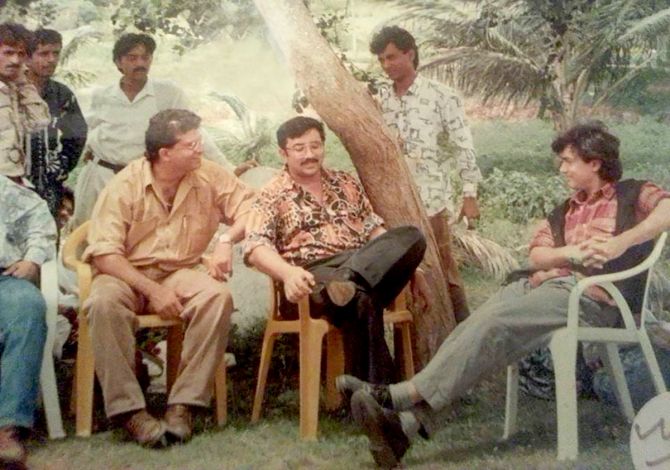
I was 24 years old, the youngest in the family, and I had just delivered a huge hit, Lootere, which revived the production company my father Darshan Sabarwal had set up.
Everyone was wondering what I would do next.
Top actors were calling me, eager to collaborate.
Established film-makers expected me to direct another action-packed thriller for the family banner.
I surprised everyone by signing up for an outside production, Tips and Cineyug, and announcing a romantic, performance-oriented, emotional family drama.
There was a mind behind the madness.
In an action film, a lot of other factors come into play, like budget, stunts etc. But a film like Raja Hindustani relied primarily on the craft and sensitivity of its director, and that upped the challenge for me.
It looks like a deceptively simple film, but as is rightly said, to be simple is not to be ordinary but extraordinary.
Since I wrote it too, I knew if it failed, there would be no one to blame. But I was ready to risk that to put my stamp on every frame.
Today, 25 years later, Raja Hindustani is as much a Dharmesh Darshan film as it is Aamir Khan and Karisma Kapoor's 'different' love story.
Old wine in a new bottle
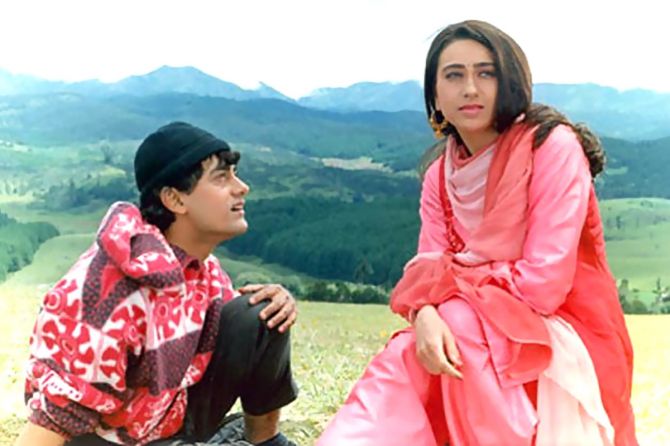
I was inspired by a 1960s film, Shashi Kapoor and Nanda's Jab Jab Phool Khile.
In the '70s and '80s, a Seeta Aur Geeta could come within five years of Ram Aur Shyam, without instant comparisons because not everyone remembered the original.
But in the case of Raja Hindustani, since we were in the digital age, my muse was easily available on home video.
Yet, no one calls my film a copy today.
For a decade, from '83 to '93, video piracy had robbed theatres of what we call in filmi lingo, its gentry audience. The so-called 'classes' stayed home and watched pirated prints and only the 'masses' came to the movies.
As a result, business crashed.
Even the power of music had faded.
In the circumstances, to sell old wine in a new bottle was the toughest challenge a film-maker could knowingly take on.
Call me foolish or brave, I accepted the dare.
And with Aditya Chopra's Dilwale Dulhania Le Jayenge and Sooraj Barjatya's Hum Aapke Hain Koun...!, we brought the audience back to the theatres and revived a dying film industry.
Choosing Aamir over Sunny
Lootere was with Sunny Deol who was not only a mega star but had the National Award-winning films Ghayal and Damini behind him.
Everyone expected me to repeat him.
I sprung another surprise by opting for Aamir Khan.
Aamir had Qayamat Se Qayamat Tak, Dil, Dil Hai To Manta Nahin and Jo Jeeta Wohi Sikander behind him when I signed him in '93.
And he went on to impress with Hum Hai Rahi Pyar Ke, Andaz Apna Apna and Rangeela by the time Raja Hindustani released in 1996.
But for every hit, there were a few flops, and Aamir was open to reinventing himself.
Class acts

As the cab driver from Palankhet, Raja Hindustani, Aamir had the sweetness and innocence to woo a sophisticated heiress from the city.
But post the interval, Raja breaks out of this familiar mould to display orthodox, small-town complexities and small-minded aggression that drives his Aarti away.
The humiliation of seeing his marriage break publicly makes this soft, sweet guy lonely, angry and bitter.
That is where Aamir's acting skills came to the fore.
I still remember one particular scene which we shot over five days, when Raja forces his way into Aarti's maternal home and her bedroom when she is away. He breaks down as he looks at the baby's cot, clothes and toys, believing that she had kept this secret from him.
He hits out in anger when taunted by her stepmother Shalu, who had played dirty with the couple, is beaten up and thrown into a gutter. Following this, he kidnaps the child.
Unfortunately, no one saw the scene and Aamir's histrionics because the film had become too long.
Giving in to market demands, we had to leave this scene out, along with some other stuff, on the editing table.
Aamir was distraught when I told him, but his performance was strong and it fetched him his first Filmfare Best Actor Award, along with other acting honours.
Raja Hindustani marked a major turning point in his career, after which he has never looked back.
Karisma Kapoor, who till then was best known for her glam quotient and dancing skills, also picked up several Best Actress Awards, stealing a march on more seasoned performers like Sridevi, Madhuri Dixit and Juhi Chawla.
She even impressed me during her emotional scenes with Aamir, making me develop them.
Though I was working with a bound script, I was always ready to improvise.
Karisma went on to sign at least 10 films with meaningful roles, finally getting her due as a performer.
The kiss that sizzled
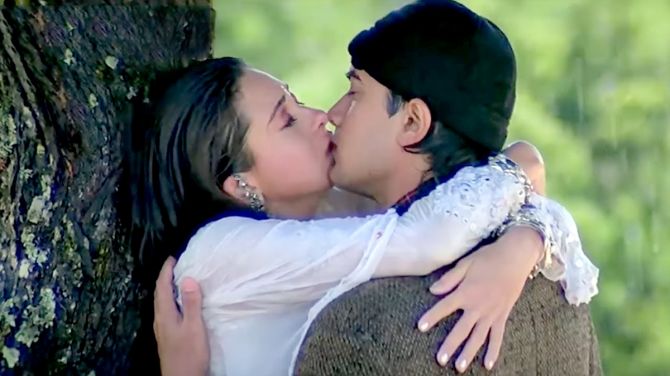
Aamir and Karisma's lip lock was Hindi cinema's longest kiss at the time, progressing from gently passionate to deeply intense.
It was tricky to have such an uninhibited, no-holds barred moment in a family film but it marks a turning point in the story.
However, while shooting it, I was conscious that there would be children watching and I didn't want parents to squirm.
I knew it had to be sensual, even sexual, but couldn't be vulgar or offensive.
I'm really proud it was passed by the censors without a single cut.
Strange as it may seem given that I was directing a mainstream Bollywood film, I had E M Foster's classic novel A Passage To India in mind and that encounter in the Marabar Caves between Adela and Dr Aziz while filming that kiss. It remains unforgettable even today when kisses are commonplace.
Disappearing act
Raja Hindustani took three years to complete.
I won't dwell on the challenges I faced through its making.
After its release, when I should have been cashing in on its success and signing films by the dozen, I was cajoled by Aamir into doing Mela to revive his brother Faisal Khan's career.
That took three years to complete too, and while it did well commercially, it was panned by the critics.
After that, I made Dhadkan in a year.
That's another evergreen blockbuster which reinvented action heroes, Akshay Kumar and Suneil Shetty, and dancing girl Shilpa Shetty.
But then my parents fell ill.
At the peak of my career, I took a sabbatical to take care for them.
My last film, Aap Ki Khatir, was in 2006.
Three years after that, my mother Sheela passed away, followed by my father, producer-director Darshan Sabarwal, in 2011.
By then, I was too exhausted, mentally and emotionally, to pick up the reins.
But you never know with me.
Now that I am emotionally healed and motivated, I may just jump right back into the arena with the right project.
54 going on 25
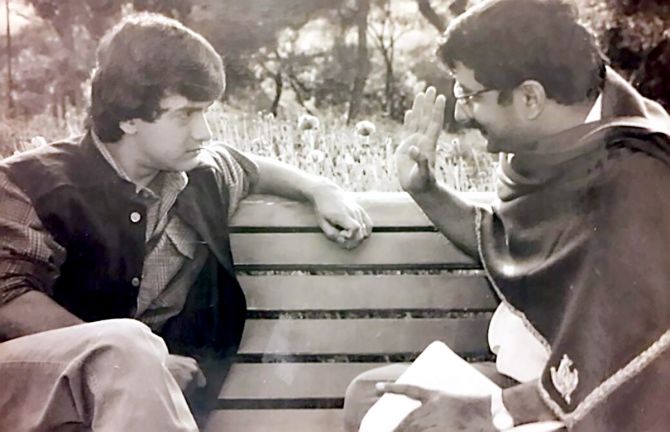
I didn't accept television reality shows that I get offered because my father was not in favour of me judging anyone's talent or mocking their efforts. I agreed, and stayed away.
I have made only seven films out of the 70 I was offered.
I even turned down a Hollywood film. No regrets.
Lootere, Raja Hindustani and Dhadkan remain unforgettable.
Today, I may not own a studio, offices or a production house.
I don't even own the rights or get royalties for the films I made because I worked as a freelance director. No regrets.
I believe a director helps build kings with his vision while he himself has to have the mindset of a hermit.
I was 27 when Raja Hindustani released. Today, I am 54. But strangely, I still feel 25, the same age as a film which came straight from my heart.









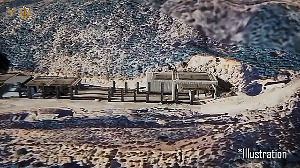


 © 2025 Rediff.com -
© 2025 Rediff.com -